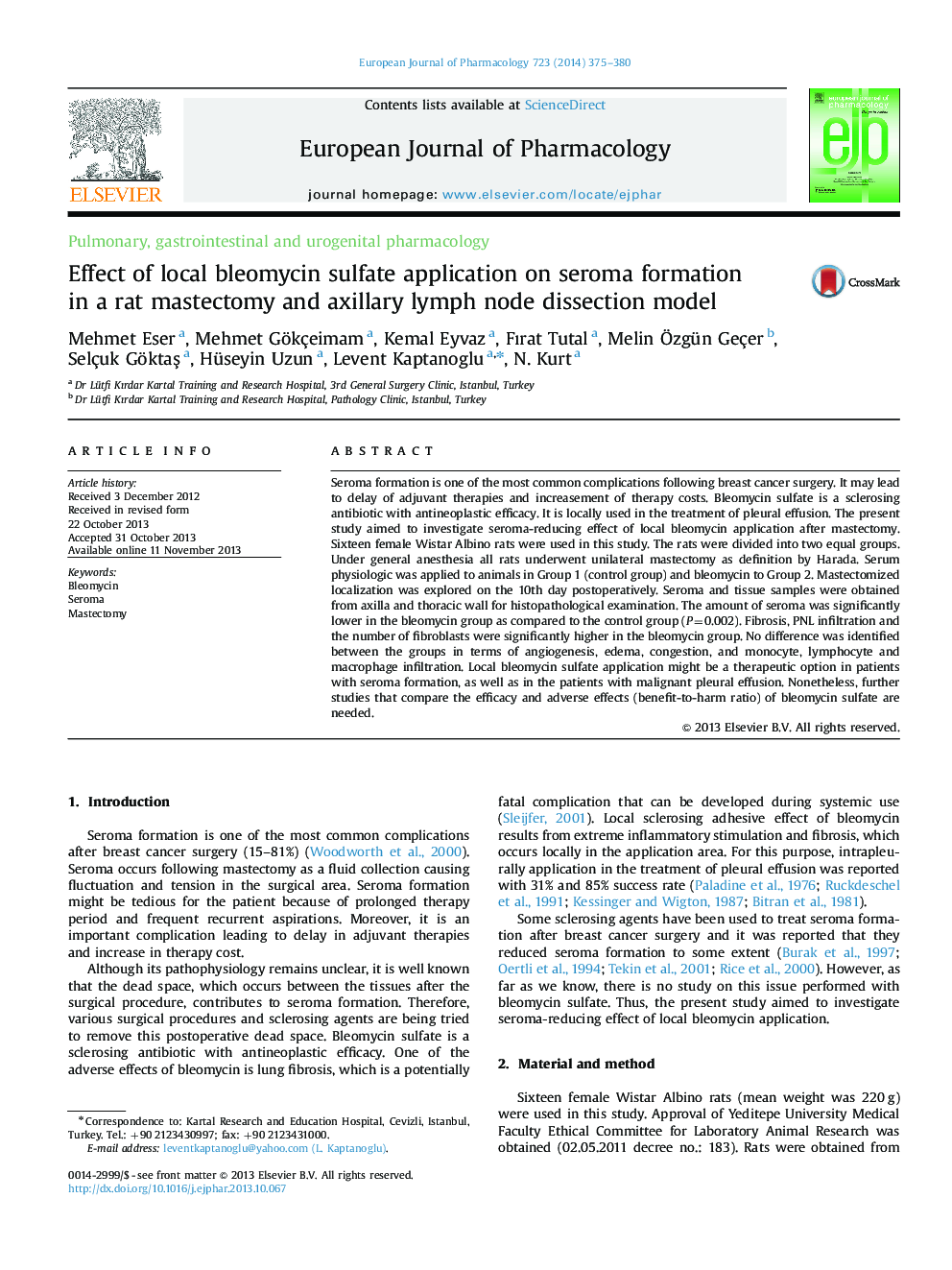| Article ID | Journal | Published Year | Pages | File Type |
|---|---|---|---|---|
| 2532024 | European Journal of Pharmacology | 2014 | 6 Pages |
Seroma formation is one of the most common complications following breast cancer surgery. It may lead to delay of adjuvant therapies and increasement of therapy costs. Bleomycin sulfate is a sclerosing antibiotic with antineoplastic efficacy. It is locally used in the treatment of pleural effusion. The present study aimed to investigate seroma-reducing effect of local bleomycin application after mastectomy. Sixteen female Wistar Albino rats were used in this study. The rats were divided into two equal groups. Under general anesthesia all rats underwent unilateral mastectomy as definition by Harada. Serum physiologic was applied to animals in Group 1 (control group) and bleomycin to Group 2. Mastectomized localization was explored on the 10th day postoperatively. Seroma and tissue samples were obtained from axilla and thoracic wall for histopathological examination. The amount of seroma was significantly lower in the bleomycin group as compared to the control group (P=0.002). Fibrosis, PNL infiltration and the number of fibroblasts were significantly higher in the bleomycin group. No difference was identified between the groups in terms of angiogenesis, edema, congestion, and monocyte, lymphocyte and macrophage infiltration. Local bleomycin sulfate application might be a therapeutic option in patients with seroma formation, as well as in the patients with malignant pleural effusion. Nonetheless, further studies that compare the efficacy and adverse effects (benefit-to-harm ratio) of bleomycin sulfate are needed.
